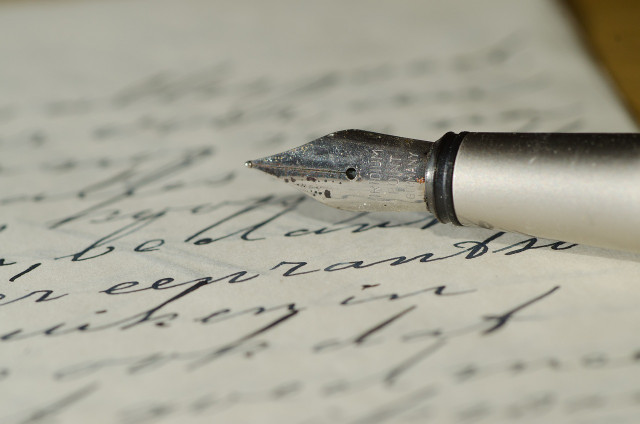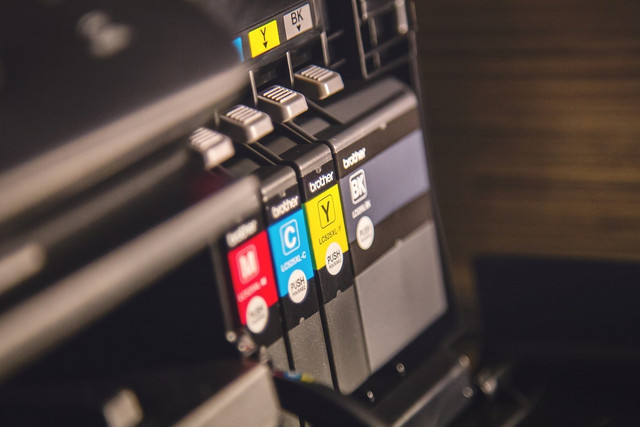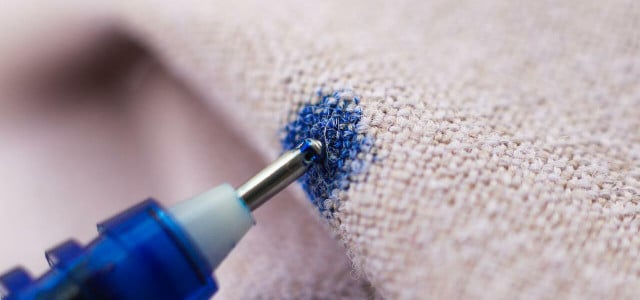We use ink every day and barely even notice it, but where does ink come from, and is it sustainable? Here we outline the basics for you.
Ink is a colorful liquid containing a mix of pigments or dyes used to transfer an image, text, or design onto virtually any surface you can think of. Ink is mostly used for illustrations or writing with a pen, metal nib, brush, or if you are really old school, a quill. Thicker inks are predominantly used in mechanical printing industries for clothing and other printable materials.
What Is Ink Made Of?
So, what is ink made of, exactly? Well, there is no easy answer to that question. Typically, most inks will contain a complicated amalgam of ingredients like resin, pigments, dyes, and wax, as well as other chemical additives such as solvents, alcohol, lubricants, carbon, aniline, dextrine, glycerine, fluorescents, and more. These various substances are utilized to affect an ink’s free-flowing properties, color intensity, durability, speed of drying, resistance to sunlight, and so on.
The first known inks used by humans date back to around 2500BC. These inks were made using things like lamp black for black coloring combined with plant-based oils or animal glues (a product derived from rendering down animal connective tissues as the pigment carrier. These simple ingredients have remained essentially unchanged.
Modern inks still use pigments/dyes combined with a carrier. These have been then built upon with modern flourishes dictated by the particular needs of the user, the particular writing tool they are using and the surface on which they are printing or writing on.
The 2 Types of Ink Pen

(Foto: CC0 / Pixabay / Andrys)
Ballpoint Pen Ink
1938 becomes a watershed moment in terms of modern ink with the development of the ballpoint pen. Ballpoint ink utilizes dye rather than pigment for coloring and the carrier is a thick oil-based concoction. This clever combination of ingredients was designed to ensure the ink would dry almost instantly once released from the pen to reduce smudging, yet fluid enough to still flow through the pen smoothly without clogging it up. These innovations were done to overcome the shortcomings of the traditional fountain pen, which had been in use for a long time.
Fountain Pen Ink
Fountain pen ink is water-based with the precise ingredients of any writing ink being closely guarded secrets in the hands of the manufacturers. Most fountain pen inks will typically consist of dye, detergents to assist in a smooth and even flow, thickening agents to keep the right level of consistency, anti-fungal agents to increase shelf-life, additives to balance the PH level of the ink and perfumes to cover up any overpowering scents released by the ink.
Is Ink Sustainable?



(Foto: CC0 / Pixabay / tookapic)
The simple truth today is that there is no ink available that can be said to be 100 percent free of synthetic chemicals and non-renewables, and thus be considered to be entirely sustainable. Algae ink, which is available with a soy or water-based carrier, probably comes close and is particularly good for anyone who predominantly prints in black ink.
Many ink products, such as printer cartridges, can contain a host of chemicals that are often damaging to the environment. Ink cartridges are also made from oil, and the heavy metals present in the ink itself can contribute to environmental pollution when empty ink cartridges are thrown in the trash rather than recycled correctly.
During the 1970s, almost all inks came with petroleum-based carriers and were commonly known as ‘solvent-based ink.’ When this solvent carrier dries, it releases compounds into the atmosphere, leading to poor air quality in the confined spaces where print workers would often work, leading to adverse health effects. These petroleum-based inks also required harsh chemical cleaners to maintain printing plates and other equipment needed in the industry, which lead to even more volatile compounds being released into the air.
However, thanks to the EPA’s Clean Air Act of 1970, the printing industry was effectively forced to transition to using vegetable, soy, or water-based ink carriers to help reduce the harmful side effects of the petroleum-based predecessors. Although switching the carriers to plant or water-based alternatives proved worthwhile, many pigments and other additives used in ink remain the same. In some cases, they can still be harmful to people and the environment, regardless of the changes demanded by the EPA.
What About the Pens?
As you probably already guessed, plastic ink pens are one of the most often used writing tools in the world. Even though computers and smartphones have replaced many handwritten tasks, ink pens remain a constant, extremely handy tool.
Plastic ink pens are, of course, not only made of plastic, as many contain small pieces of metal, such as the little ball in the tip of a ballpoint pen. If these metal components are not removed before disposal, your plastic ink pen will not be recyclable.
This inconvenient fact means that very often, these disused ink pens will end up in landfills. This is extremely damaging to the environment as many of the volatile compounds in inks can leech into soils and water supplies, leading to health problems for local plant and animal life.
Considering that in the US alone, millions of these old plastic pens end up in the trash, you can start to picture what a serious problem these inks can be when disposed of incorrectly on such as large scale.
Some Eco-Friendly Ink Alternatives



(Foto: CC0 / Pixabay / 6072518)
Thankfully, it is not all doom and gloom since there are many innovative alternatives to the traditional plastic ink pen that can help you tread a little more lightly.
Recycled Plastic Pens
Most of the major ink pen manufacturers in the US have at least one recycled ink pen product widely available in most stores and supermarkets. Some of these ink pen alternatives are really quite ingenious and include using recycled paper and cardboard or recycled plastics gleaned from old cars, fridges, and CDs to make pencils.
Ink pen producers such as Pilot and Pentel have been manufacturing pens made from recycled plastic bottles for a few years now. Just remember that although recycled, these pens are still plastic and will still need to be sent to the appropriate recycling facility to ensure they, too, don’t end up in a landfill.
Refillable Fountain Pens
Another great idea would be to go “old school” and pick up the traditional fountain pen, which can be refilled again and again, and, if looked after, could last a lifetime. Many fountain pen inks will also come in recyclable glass jars, making them a good zero-waste option for writing and drawing.
Furthermore, most fountain pen ink is composed mostly of water and simple dyes that are made from natural ingredients. Similar to a refillable fountain pen, you could opt for a refillable bamboo pen, which works in much the same way and offers the same sustainable benefits.
Biodegradable Pens
Biodegradable corn pens, made from corn starch, are also a sustainable alternative. Yes, these pens are still disposable. But seeing that the corn starch will biodegrade over the course of a year, they are a slightly less harmful option, giving our landfills some relief from the plastic build-up associated with conventional plastic ink pens.
Inkless Pens
This clever pen simply uses metal instead of ink to make its mark. You will be writing in gray since other colors are not available, but the upside is that these inkless pens never need to be sharpened and will never run out of ink, making them a fantastic alternative to those disposable plastic ink pens many of us have grown so accustomed to.
Read more:
- Natural Temporary Tattoo DIY: 5 Methods and Ways to Make It Last
- Paper Books vs. eBooks: Which Are Better for the Environment?
- Potato Printing: How to Make and Use Potato Stamps
Do you like this post?








